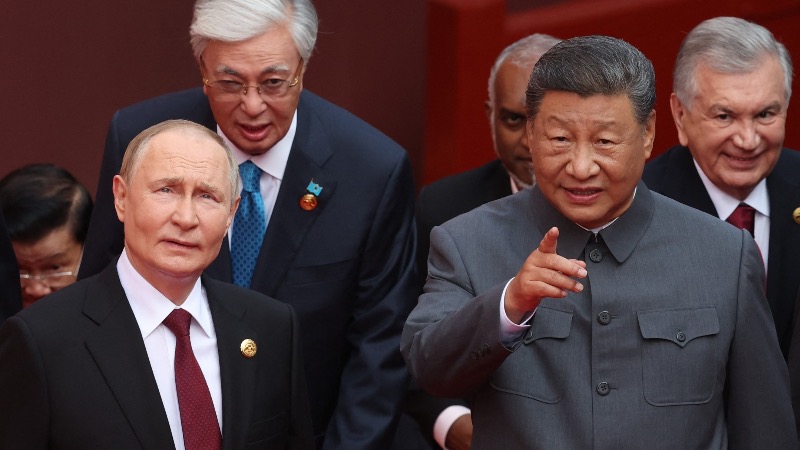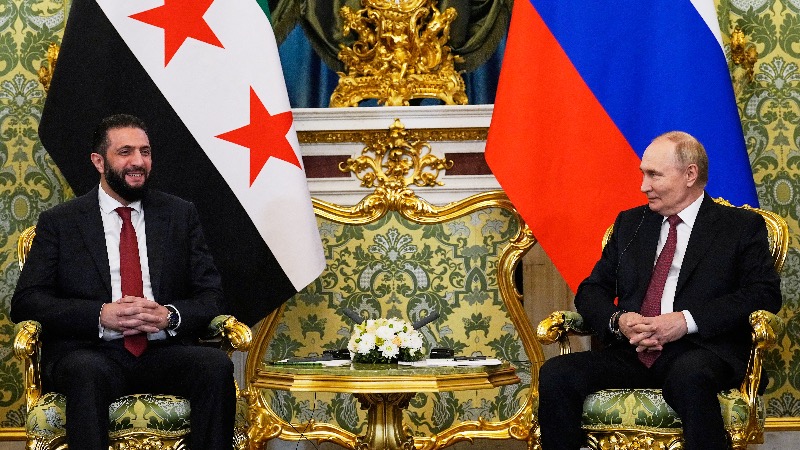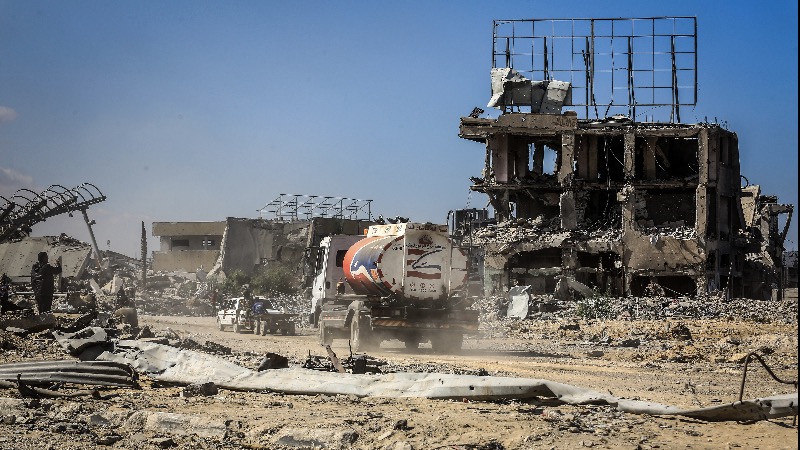 Image Credit: ALEXANDER KAZAKOV / Contributor / Getty
Image Credit: ALEXANDER KAZAKOV / Contributor / Getty The Royal United Services Institute, a U.K.-based defense and security think tank has published a report which detailed alleged hacked documents which purport to show that Russia is supplying China’s military with equipment and training on aerial infiltration for an upcoming Chinese invasion of Taiwan.
“Russia has agreed to equip and train the PLA to air-drop armoured vehicles and special reconnaissance capabilities,” The Royal United Services Institute, a U.K.-based defense and security think tank which reported on the hacked documents said Friday. “Chinese President Xi Jinping has directed the People’s Liberation Army (PLA) to be ready to militarily seize Taiwan by 2027.”
Approximately 800 pages of contracts, collateral materials and correspondence were obtained by the Black Moon hacktivist group and “appear genuine” and “have been independently verified” yet “there is also the possibility that parts of the documents have been altered or omitted,” according to the think tank report.
The publication of materials obtained by our hackers from the Russian-Chinese project ‘Sword 208’ is coming to an end. Today, we are posting the tenth package on our account, which contains the most valuable and important information about the automated system developed by the… pic.twitter.com/OccTpH0HGi
— BlackMoon. The Quiet Protocol Initiative (@blackmoon_group) September 23, 2025
While the think tank that published the report admits the documents were acquired via hacking, mainstream media outlets all ran with the term “leak,” likely in order to position themselves as upstanding organizations in the global war for people’s minds.
We present the ninth package of documents on the Russian-Chinese project “Sword 208” aimed at preparing an amphibious operation on Taiwan. As promised last time, this package includes photos of the criminal group of Russian developers and Chinese customers of the automated… pic.twitter.com/mJ1mHBYNKB
— BlackMoon. The Quiet Protocol Initiative (@blackmoon_group) September 16, 2025
“Russia agreed in 2023 to supply the PLA with a complete set of weapons and equipment to equip an airborne battalion, as well as other special equipment necessary for airborne infiltration of special forces, along with a full cycle of training for operators and technical personnel to use this equipment. In addition, Russia is transferring technologies that will allow China to scale-up the production of similar weapons and military equipment through localization and modernization,” The Royal United Services Institute think tank said.
The agreements provide for the sale by Russia to China of:
- 37 BMD-4M, light amphibious assault vehicles with a 100 mm gun and 30 mm automatic cannon.
- 11 Sprut-SDM1 light amphibious anti-tank self-propelled guns with a 125 mm cannon.
- 11 BTR-MDM ‘Rakushka’ airborne armoured personnel carriers.
- Several Rubin command and observation vehicles and KSHM-E command vehicles.
“The agreements also require Russia to train a battalion of Chinese paratroopers in employing the equipment,” The Royal United Services Institute think tank said. “Armoured vehicle drivers will be trained at the Kurganmashzavod base, and the crews of KMN command and observation vehicles and Sprut anti-tank guns will be trained in Penza at JSC NPP Rubin. After completing courses on training equipment and simulators, the collective training of the Chinese airborne battalion will be carried out at training grounds in China. Here, Russian instructors are to prepare the battalion for landing, fire control and manoeuvring as part of an airborne unit. The Russians are also transferring Rheostat airborne artillery command and observation vehicle and Orlan-10 multi-purpose unmanned aerial vehicles. A Centre for Technical Maintenance and Repair of Russian Equipment will be established in China, to which all necessary technical documentation will be transferred. This will allow China to undertake the production and modernisation of these capabilities in the future.”
The island nation of Taiwan has a formidable coastline not amenable for water-based landing craft, so aerial infiltration is a likely tactic for a theoretical invasion. Another think tank, the Stimson Center, claims China is not preparing to invade Taiwan, in their report from September 3 they said:
Establishing a beachhead in Taiwan would be another significant challenge. There are relatively few suitable beaches to begin with. Ian Easton, a Naval War College professor and China scholar identified 14 potential invasion beaches on Taiwan, noting that the main island’s 770-mile-long coastline is “remarkably unsuited for amphibious operations.”
The Royal United Services Institute think tank addressed the issue of the formidable coastline issue as well:
Chinese President Xi Jinping has directed the People’s Liberation Army (PLA) to be ready to militarily seize Taiwan by 2027. A large-scale amphibious operation is highly risky, with the sites suitable for landing craft to deliver troops and equipment ashore constrained by the gradient and load bearing capacity of the beaches. Seizing airfields could allow troops to flow in by air, but as Russia discovered during its invasion of Ukraine, runways can be quickly denied. The PLA is therefore eager to identify ways of diversifying both the methods and locations at which it can move units onto Taiwan.
Talk of a Chinese 2027 invasion of Taiwan began to pick up during the last year of Joe Biden’s autopen presidency. In 2024 Defense News reported:
The topic was Taiwan, which China’s government considers part of its rightful territory and has threatened to take by force. When it came up, according to an American official who later spoke to the press, Chinese leader Xi Jinping grew exasperated — not at the risk of war, but at the timeline.
“Xi basically said: ‘Look, I hear all these reports in the United States [of] how we’re planning for military action in 2027 or 2035,’ ” the official said.
“ ‘There are no such plans,’ ” Xi said in the official’s telling. “ ‘No one has talked to me about this.’ ”
The countdown to the day when China will seize Taiwan began on the day of the military parade in Beijing on 3 September 2025. https://t.co/glPxtP2bFr
— BlackMoon. The Quiet Protocol Initiative (@blackmoon_group) September 4, 2025
Based on the documents we have at our disposal from the Russian-Chinese Sword 208 project, we predict that this attack could… pic.twitter.com/EKz5uuR6Gh
While some believe China is preparing for a Taiwanese invasion, others believe the risks to Beijing outweigh the benefits, and thus, China will not launch the attack.
“This report draws on extensive research, including fieldwork in Taiwan, to assess the likelihood of a Chinese invasion. Contrary to dominant defense narratives in Washington, the analysis shows such a scenario would be among the most complex and dangerous military operations in history. From risk of nuclear escalation to prospects of political upheaval and economic catastrophe, the barriers to invasion are immense. U.S. defense policymakers should reconsider this assumption on which to establish future military plans and explore more probable conflict scenarios.” the Stimson Center said.
The Royal United Services Institute report has a disclaimer: “The views expressed in this Commentary are the authors’, and do not represent those of RUSI or any other institution,” think tank said.
Moscow has not appeared to counter the validity of these hacked documents nor the plans within, Russia Today (RT) and TASS the Russian News Agency have not appeared to publish stories on them, although proving things is much easier than disproving them.



